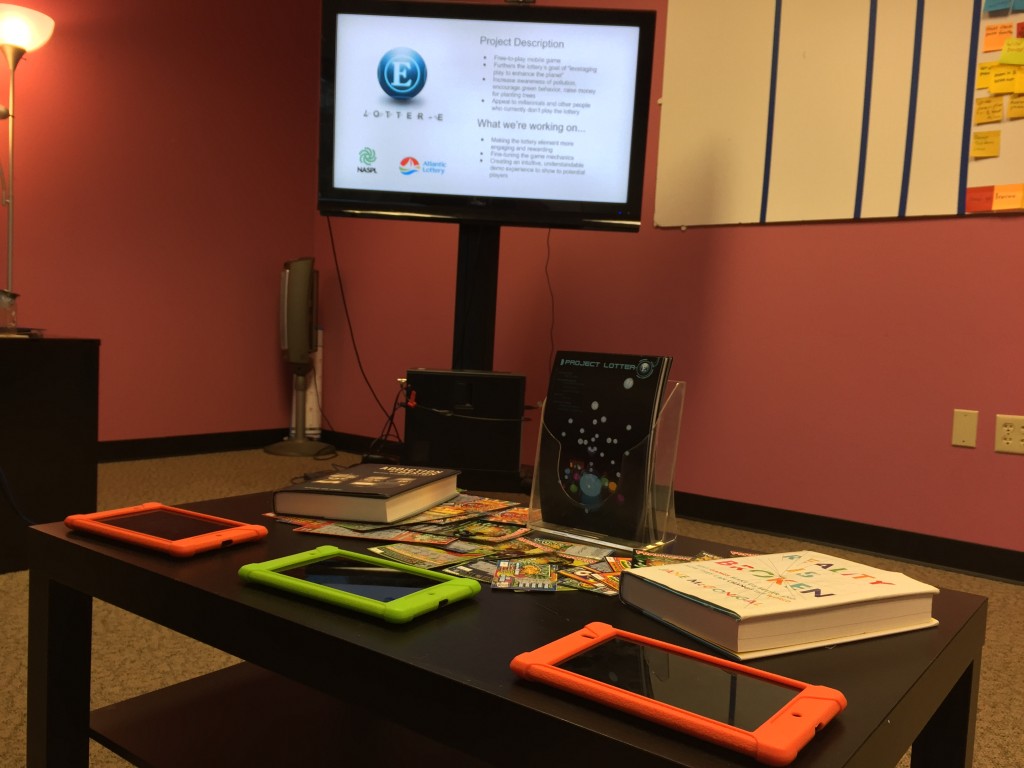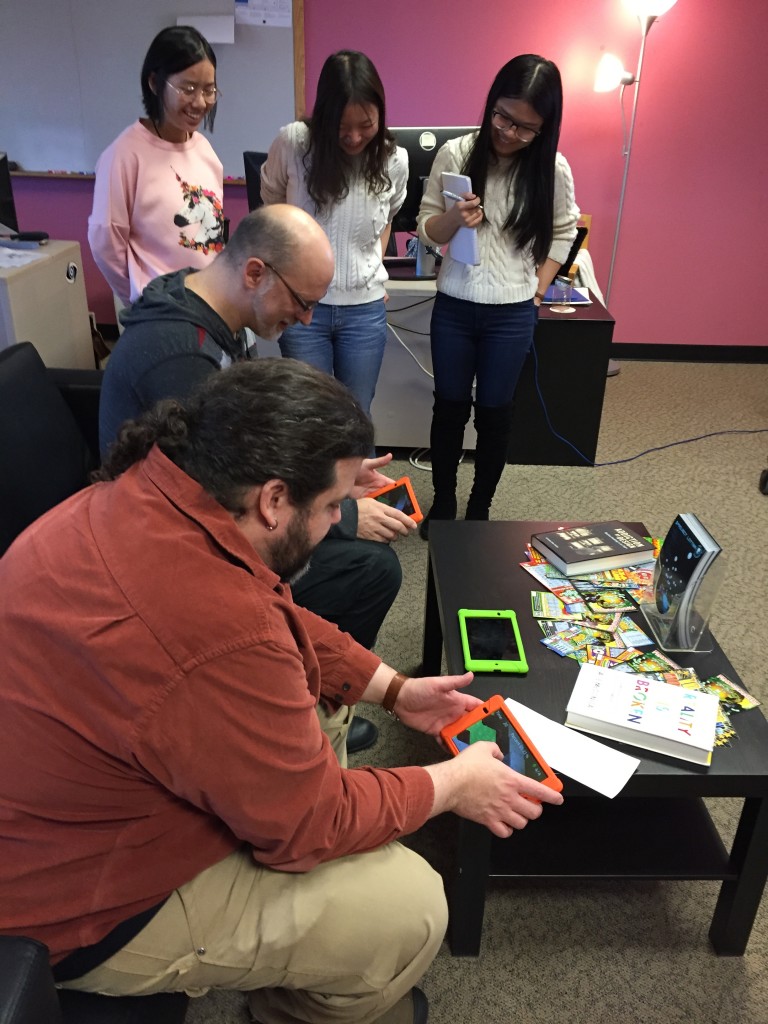Week 14
We had addressed the feedback we got from our playtesters. We had designed a new set of easier to understand levels. We had finally implemented our lottery element as well as the related prize system. While we knew there was still a good deal of polishing left to do, we felt we were close to our goal of a fun game that encouraged green behavior as well as offering a compelling lottery component. After showing it to the faculty at Softs, however, it looks like we might still have a lot of work ahead of us, both in terms of the game itself as well as in the way we message it.
It was hard to gauge reactions during Softs itself, but it seemed like people were enjoying the game. Most visitors seemed engaged with the game, playing repeatedly until we told them to stop. This was exactly the reaction we were hoping for, and that, combined with the positive feedback we received in our last playtest had us feeling confident that our game was hitting its goals in terms of engagement. We definitely noticed some frustration with the controls, and it became clear that people weren’t discovering the lottery elements without our help, so we knew we had some work to do before Finals. However, overall, it seemed like we were on a good track.
When grades came down, it was a different story. Some of the complaints were things we expected. For example, while we generally liked how controlling the leaf felt, we were aware of issues that arose when the leaf bounced against a wall. We had gotten some complaints from previous playtesters about it, but they still enjoyed the game despite the issue so we figured it was something that could wait until after Softs. However, this ended up being one of the biggest complaints from faculty, and looking back there were a couple things that exacerbated the issue.
For one, the isometric game view makes it hard to tell exactly where you’re cleaning. We added a shadow to the game to make it more obvious where the leaf was in 2D space, but most people didn’t notice the shadow and simply assumed the leaf would clean anything directly behind it. This lead to people having difficulty cleaning the exact tile they wanted, especially near the edges, leading them to repeatedly bounce off the wall and lose control. This was an understandably annoying experience, and we plan on not only changing how the leaf responds when it hits the wall, but also how it cleans.
Adding to this was the fact that we made more powerful leaves an item that players could unlock by walking more. Playing with the weakest leaf made the game quite difficult, while playing with the strongest made it easy to advance through levels. While we wanted the game to have a good degree of challenge, in a short-term test setting like Softs “difficulty” can quickly turn into frustration. The more powerful leaves cleaned larger areas, masking some of the frustration around trying to clean a spot you missed. We found that people who played with the more powerful leaves had more fun than the people who played with the basic ones, and in future tests we will do more to ensure that people play with the more powerful leaf.
Another complaint we received was that our game felt like a “frankenstein” of different game elements, with no unifying theme tying it all together. This might be more of an issue of messaging, rather than anything with the game itself. The feature we saw the most confusion around was the step tracking element. People either didn’t see how it connected to the environment, or why the game even needed it in the first place. However, the step tracking was actually one of the features our client was most excited about, and was something that was a part of our design since Week 3.
We’re actually working on a blog post dedicated entirely to the role of step tracking in our game, but it’s worth discussing it here briefly. One of our clients’ biggest goals for this project was to have something in the game that would encourage players to make a change in the real world in addition to raising money and awareness. We brainstormed many, many ways to do this, but it’s very hard to reliably measure real world activity. We considered things like having them pick up trash, recycle more, or even plant trees themselves, however there would be no way for us to make sure they did it before rewarding them. We settled on step tracking because it’s something that’s easy to track with most modern smartphones, and is also difficult to cheat since it doesn’t require self-reporting. The idea is that we want to encourage people to walk places instead of driving, and while measuring net walking isn’t necessarily directly tied to a reduction in driving, we figured that it’s a good thing to reward regardless.
However, judging by the confusion with which this feature was met, it’s clear we didn’t do a good enough job communicating this. We’re planning on adding instructions that better explain this feature and its connection to the environment, as well as more environmental messaging overall to help tie the theme of this game together. We also plan on simplifying the step entering process, both to streamline the game experience, as well as to make its purpose more clear.
Finally, while people seemed to enjoy the lottery elements, very few people discovered it on their own, and as a result it felt disconnected from the rest of the game. We actually hadn’t anticipated this problem, but that was mainly due to the fact that we hadn’t tested the game with the lottery elements implemented before Softs. Softs actually served as a playtest for us for the intuitiveness of our entire game experience, and it’s clear we still have a lot of work to do there. We assumed people would be curious about the various features of our game and eventually find the lottery sections, but as it turns out they spent most of their time progressing through the levels without pausing to see what else there was. As a result, we’ve added some new UI elements as well as some minimal instructions that will drive players to the lottery portions of our game. We’ll also add some more polish to the lottery and prize sections as well to make them both more intuitive and more rewarding.
So most of our work this week and next will be to address these concerns. We’re making the leaf move more smoothly and intuitively, we’re adding more environmental messaging to tie all the features of the game together, and we’re adding more instructions to make the entire game experience flow better. We strongly believe that with these changes, as well as some additional polish and juiciness, we should have a game that is fun and addicting, and is in line with our client’s goal of “leveraging play to enhance the planet.”


